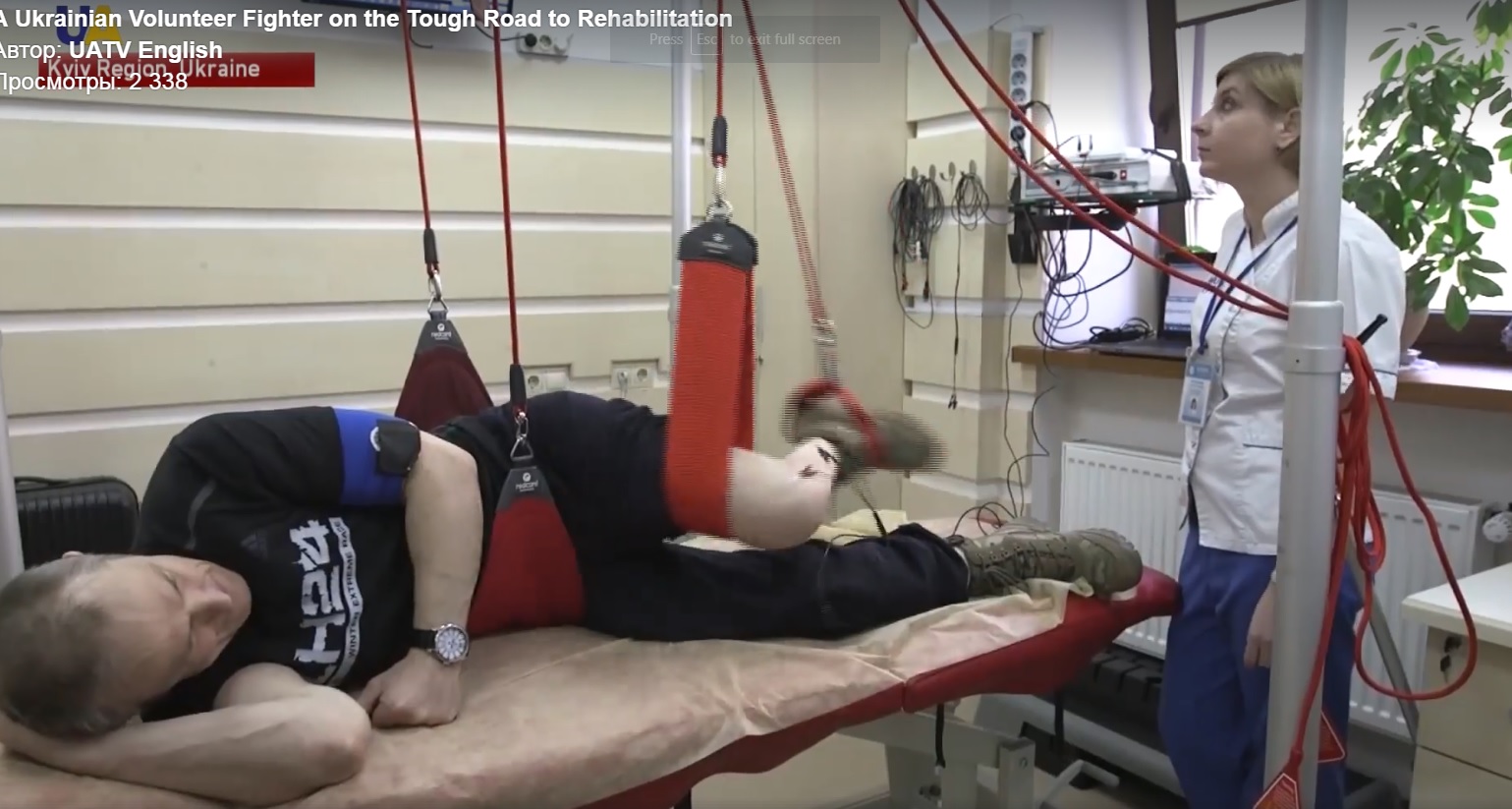Back in 2015, the 57-year-old couldn't just watch Ukrainian soldiers on television, defending the country against Russia's war. Serhiy's age meant the military recruiting office rejected him three times; but he never gave up. Eventually, he was enlisted in the fourth wave of mobilisation - and after two months training to be a sapper, departed for the front line as part of the 92nd Brigade.
On August 5th, 2015, a sniper bullet hit Serhiy's spinal cord, causing multiple trauma. Three complicated surgeries and a month in intensive care was just the beginning of a long journey.
In May 2016, he was admitted here - to Nodus - a highly specialised neurorehabilitation centre near Kyiv. It's Ukraine's only private clinic that tries to give the most severely wounded soldiers a new lease of life through its charity project. The director of Nodus explains the importance of a harmonised program to gradually move patients into the vertical position, especially those with traumatic brain injuries.
"Immobilised patients eventually develop osteoporosis - a bone disease. But because the patient spends most of the time in a vertical position, he basically imitates the physiology of walking. Besides, he walks in all directions, which creates a positive psycho-emotional feeling that the patient is walking. It also helps to stay vertical for the maximal amount of time," says director of Nodus Neurorehabilitation Centre Oleksandr Kulyk.
Serhiy's tailored program for rehabilitation makes your average gym routine look easy. Every day, he exercises up to six hours with little rest. This sling contraption from Norway exercises the abdominals, hips and spinal muscles. To make such routines less monotonous, he receives feedback on this machine.
“If the patient is conscious, all of the exercises are aimed at strengthening muscles, improving coordination and symmetry. Serhiy now exercises in an active mode. He can open and close his legs himself. At first, we only exercised in a passive mode: I did everything and Serhiy sent impulses and imagined how it should be done. Then, he tried to help me perform these movements. As of now, Serhiy can perform them on his own, thanks to his hard everyday work,” says physical therapist Inna Gorschenina.
It's a sad fact not all patients are like Serhiy. Many wounded war veterans lose faith in ever walking again. I asked Serhiy where he draws his resolve from.
“Since the injury, I understood that I can’t temporarily walk. I am temporarily ill. I cannot even imagine not walking at all. For me, walking is living. And living without legs… Yes, I could use a wheelchair, but I cannot even imagine it,” says Serhiy.
“Some have accepted this and don’t want to fight for their further life. They are satisfied with what they have. Although this isn’t right, it’s their choice. I think that if they see results in other people – that the others can walk again and get better, it will be a huge motivation for them. I think that they will see this in a different light and will fight for their health.”
The doctors and nurses at the neurorehabilitation centre believe that every Ukrainian war veteran should be helped - including those in a coma or vegetative state. American war veterans who traveled to Ukraine to visit the heroes - it is humbling stories like Serhiy's that resonate beyond Ukraine.

